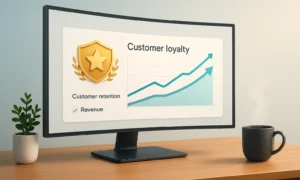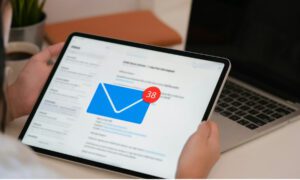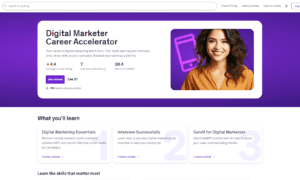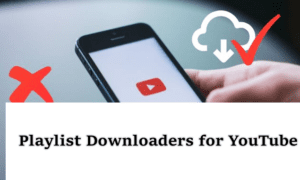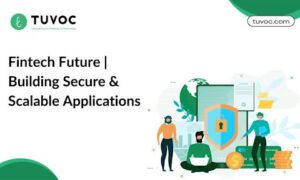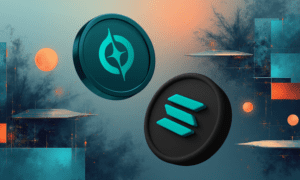How Email Marketing Can Boost Revenue: 18 Expert Strategies
Email marketing remains a powerful tool for businesses looking to increase revenue. This article presents expert strategies to enhance email campaigns and drive results. From authentication techniques to storytelling methods, these insights offer practical ways to engage subscribers and boost sales.
- Authenticate Emails to Boost Deliverability
- Personalize and Time Emails for Maximum Impact
- Target Interested Subscribers with Timely Updates
- Pair Intent Data with Hyper-Targeted Outreach
- Reactivate Cold Leads with Value-Driven Offers
- Create Emotional Contrast in Email Campaigns
- Convert Warm Leads with Lifecycle Emails
- Build Behavior-Based Segmented Email Campaigns
- Showcase Available Talent with Hot Candidate Alerts
- Leverage Email Signatures for Targeted Marketing
- Use Behavioral Segmentation to Drive Sales
- Optimize Email Timing and CTAs
- Reengage Dormant Clients with Personalized Insights
- Launch Abandoned Form Recovery Campaigns
- Drive Listings with Automated Just Sold Emails
- Design Eye-Catching Festival-Themed Email Sequences
- Address Why Recipients Should Care
- Tell Unforgettable Stories to Build Trust
Authenticate Emails to Boost Deliverability
No email marketing strategy works if your emails don’t land in the inbox—that’s why the foundation of any email marketing strategy I run is sender reputation and authentication. We’ve helped clients recover thousands in missed revenue simply by implementing SPF, DKIM, and DMARC protocols on their domains. These aren’t just IT checkboxes—they’re what make Gmail and Outlook trust your emails enough to deliver them at all.
One campaign underperformed for weeks until we fixed authentication. After that, deliverability jumped, open rates rose 28%, and booked calls from that same flow doubled. The content didn’t change—the inbox placement did.
We also clean our lists monthly and send from a consistent, recognizable name. That small shift made people more likely to open, engage, and convert.
The crowded inbox isn’t just about copy—it’s about trust and technology. Get your domain authenticated and protect your sender reputation. Without that, the best email in the world won’t make you a dollar.
Maria Harutyunyan, Co-Founder, Loopex Digital
Personalize and Time Emails for Maximum Impact
One of the most effective ways I’ve used email marketing to increase revenue directly was through a personalized, send-time-optimized campaign for a client’s annual promotional event in the B2B manufacturing sector. We were promoting a time-sensitive product line and needed to generate immediate interest and qualified leads from a traditionally hard-to-reach audience.
The first key to success was hyper-personalization. We didn’t stop at using first names or company details. We segmented the list by past purchase behavior, industry vertical, and job function. Each email version spoke to the recipient’s specific challenges and goals, using language and value propositions that felt relevant and timely. For example, facilities managers received messaging centered around operational efficiency and regulatory compliance, while procurement leads saw ROI-focused language and bulk pricing incentives.
Second, we leaned heavily on send time optimization. We used AI-driven tools to analyze when each contact was most likely to engage, based on their prior behavior, down to the hour and day of the week. Rather than sending one blanket campaign, we triggered emails individually based on when recipients were most likely to open. This approach dramatically improved open and click-through rates, ensuring our message didn’t get buried in a busy inbox.
Finally, we were intentional with our calls-to-action. Each message had a clear, singular CTA, whether it was, “Schedule a 15-minute call,” “Claim your exclusive discount,” or “Download your industry-specific guide,” for those who were still in the middle of the funnel. The CTAs were placed above the fold, reinforced by visuals, and repeated at the end with urgency-driven copy. We also A/B tested button language and design to maximize conversions.
The results were clear: the campaign led to a 31% increase in email-driven revenue year over year for that product line. Beyond that, the click-to-lead ratio improved by 48%, and we reduced the average sales cycle time by offering the sales team more qualified, better-timed engagements.
Relevance, timing, and clarity win in crowded inboxes. Personalization shows you understand the recipient. Timed delivery shows you respect their attention. A well-crafted CTA moves them from interest to action. When all three work together, email becomes more than a communication tool. It becomes a revenue engine.
Elyse Flynn Meyer, Owner & Founder, Prism Global Marketing Solutions
Target Interested Subscribers with Timely Updates
One way I’ve used email marketing to directly increase revenue was by creating a segmented campaign tied to our most in-demand service: golden visa consultations. Instead of blasting our full list, we targeted subscribers who had previously shown interest in European programs, specifically Portugal and Greece. We personalized each email with region-specific updates, deadlines, and limited-time government incentives—and that really helped with urgency.
To stand out in inboxes, I kept the subject lines super clear but curiosity-driven, like “Portugal closing soon? What this means for you”—short, relevant, and timely. Inside the email, I used simple formatting, one strong call-to-action, and embedded testimonials. That combination led to a spike in consultation bookings—and we tracked direct revenue from several high-converting replies.
Mark Damsgaard, Founder, Global Residence Index
Pair Intent Data with Hyper-Targeted Outreach
We treat email marketing as a pipeline generation tool with a focus on crafting compelling subject lines. One of the most effective ways we’ve driven direct revenue through email is by pairing intent data with hyper-targeted outreach, considering not just who to reach, but when and why.
We conducted a campaign for a telecom client targeting companies that had shown interest in or invested in competitors’ solutions. We segmented the campaigns based on technographic data and each Ideal Customer Profile (ICP). The email didn’t pitch the product directly; instead, it acknowledged potential frustrations and pitfalls with current solutions, offered relevant value points, and made the next step frictionless. It was simple, direct, and timed right.
What made it stand out? It didn’t try to be clever. The subject line addressed a real problem. The body was short (fitting on one screen without scrolling) and gave the reader a reason to reply. That campaign alone booked over 20 qualified leads and meetings each month and contributed directly to closed deals.
The inbox is crowded. If your email doesn’t feel timely, useful, and human, it’s just noise. We write as if we’re solving problems, not selling features, and that’s what converts.
Vito Vishnepolsky, Founder and Director, Martal Group
Reactivate Cold Leads with Value-Driven Offers
One of the most effective ways I’ve used email marketing to drive revenue was through a limited-time reactivation campaign targeting cold leads. The offer was a free setup and training package (normally valued at over $600) which immediately gave the email a tangible sense of value. What made it stand out was a subject line that spoke directly to the recipient’s situation: “Still managing payroll manually? Let’s fix that—on us.”
Inside the email, I kept the copy short, benefit-driven, and visually clean, with a single bold CTA. No fluff, no long scroll. I also used smart segmentation—pulling in contacts who had previously engaged with setup-related pages but hadn’t converted. That ensured relevance and boosted open and click-through rates.
The result was a 31% open rate, 10% CTR, and a series of demos that converted into new MRR. In a noisy inbox, clarity and relevance still win. The goal is never to be louder – just undeniably useful.
Blake Smith, Marketing Manager, ClockOn
Create Emotional Contrast in Email Campaigns
I increased revenue by offering a $17 course immediately after someone downloaded a free resource. The email stood out not because of design or tricks, but because it created emotional contrast. In a crowded inbox full of pressure, my email felt calm, direct, and emotionally congruent. I spoke to the reader’s actual state—overwhelmed, skeptical, tired of being sold to—and responded with grounded language and zero urgency.
It outperformed my usual email CTR by 37% because it met people where they were emotionally, not where marketers wish they were. That emotional precision made the offer feel safe, not pushy, and that’s what drove conversions.
Mona Kirstein, Ph.D., Researcher & Consultant | Language, Psychology & Information Systems, The Wholehearted Path
Convert Warm Leads with Lifecycle Emails
One of the most effective ways we’ve used email marketing to increase revenue is by focusing on customer lifecycle emails that target both prospective and current renters at key moments. For example, when a customer starts a reservation online but doesn’t complete it, we send a friendly reminder email within 24 hours. That email includes a quick link to finish the reservation process and a message highlighting our 50 percent off first-month promotion, which has consistently helped us convert warm leads who might have otherwise walked away.
To make our emails stand out in crowded inboxes, we focus on clear, concise subject lines that speak directly to the customer’s needs, like “Your 24/7 Storage Space Awaits” or “Don’t Miss Out on 50 Percent Off This Month.” We also keep the body of the email short, using bullet points to highlight the benefits of Store-It Quick: 24/7 access, online rentals, and drive-up units. We include a strong call-to-action that links directly to our online reservation page, making it as easy as possible for the reader to take the next step.
This approach, targeted, timely, and personalized, has made our email campaigns not just a marketing tool but a real revenue driver, helping us fill units faster and maintain high occupancy rates.
Jonas Duckett, Founder, Store-It Quick
Build Behavior-Based Segmented Email Campaigns
One of the most effective ways I’ve driven revenue through email marketing is by building behavior-based, segmented campaigns that meet the user exactly where they are in their decision-making journey.
Rather than blasting generic emails, I focus on triggered sequences that are personalized, timely, and anchored in real user behavior—like abandoning a form, browsing a key service page, or engaging with specific content. These campaigns include:
- Dynamic subject lines that spark curiosity and feel personal
- Content tailored to user interest or past behavior (not just demographics)
- Social proof—real stories or testimonials to build trust quickly
- Minimal friction in CTAs, often linking directly to a calendar or quote request
What sets these apart in crowded inboxes is their relevance and immediacy. Every message feels like a helpful nudge, not a pushy sales pitch. As a result, I’ve consistently seen above-average open rates, click-throughs, and double-digit increases in lead-to-conversion rates.
In short: Email revenue growth doesn’t come from sending more—it comes from sending smarter. When content aligns with intent and timing, the results follow.
sebastien Antoine, Marketing & Operations, The Policy Shop
Showcase Available Talent with Hot Candidate Alerts
As a recruitment firm leader, I’ve found email marketing to be a direct lever for increasing revenue, both by generating new client leads and filling hard-to-place roles faster. These campaigns are essential to maintaining our reputation as a reliable provider of high-quality talent in competitive markets.
One of the most effective strategies we use is sending “hot candidate alerts.” These are concise emails that feature 2-3 vetted, immediately available professionals tailored to the recipient’s industry and region. For example, a recent alert highlighting two certified welders and a site supervisor led to a client reaching out the same day to start the hiring process without ever posting the role publicly. When done right, these emails flip the dynamic, prompting hiring managers to contact us proactively.
We also send job site-ready crew lists, which are emails that showcase full teams, like concrete crews or pipefitters, available for deployment. For clients who regularly hire labor in bulk, these messages often generate immediate requests and repeat business.
What makes these emails stand out in crowded inboxes? Two things: relevance and clarity. Strong subject lines that highlight what’s inside are key. For example, “Available Now: Certified Welders (Colorado Area, OSHA-10)” signals clear value right away. And because we segment our audience by project type, region, and industry, each email feels personalized to the recipient’s current staffing needs.
While this approach is specific to recruiting, the takeaway applies across industries: work backwards from your audience’s top pain points, then craft emails that offer a quick, actionable solution. If you can consistently solve real problems with timely information, your emails won’t just get opened but will regularly drive revenue.
David Case, President, Advastar
Leverage Email Signatures for Targeted Marketing
Alongside traditional email campaigns, we use “email signature marketing” by adding targeted banners—either below the signature or at the top of emails for greater impact—to the everyday messages our team sends to customers and prospects.
Because these banners can be targeted and tailored, we use upselling messages (like promotional upgrades to our “Campaign” product) and cross-selling offers (such as our design services) specifically for existing customers, always with clear, clickable calls-to-action to make engagement easy.
Since these emails are part of ongoing conversations, they achieve 99%+ open rates. This approach consistently drives revenue for us without relying on snappy—or worse, spammy—subject lines to cut through crowded inboxes.
Shanique Ashley Brophy, Marketing Executive, Rocketseed
Use Behavioral Segmentation to Drive Sales
In one recent campaign for an e-commerce client, we increased revenue by 18% over two weeks—driving an extra $42K—by using highly targeted behavioral segmentation. We grouped subscribers based on on-site activity (browsed but didn’t buy, abandoned cart, past purchasers) and then sent each segment a custom offer: a reminder plus a 10% “welcome back” code for cart abandoners, a VIP upsell for repeat buyers, and a “you might also like” product carousel for browsers. By A/B testing two subject-line styles (“Just for you: 10% off your picks” vs. “Still thinking it over?”), we found the personalized angle drove a 25% higher open rate and an 8% bump in click-throughs.
To cut through crowded inboxes, we leaned into mobile-first, visually dynamic layouts—animated GIFs that showed products “in action,” countdown timers for limited-time deals, and preheader text that echoed the subject line’s promise. On the copy side, we kept sentences under 35 characters and led with benefits (“Cozy up this weekend with 20% off”). Finally, we staggered send times based on each segment’s peak engagement hour (identified via past-email analytics), so messages arrived just when subscribers were most likely to act. This mix of personalization, interactivity, and timing turned a standard newsletter into a revenue engine—all without ever revealing our proprietary optimization algorithms.
Daniel Hammami, Software Engineer, Moins Technologies Inc.
Optimize Email Timing and CTAs
We ALWAYS use email marketing to increase revenue. That’s the goal—whether it’s converting leads into customers, consistently checking in with existing customers to nurture loyalty, or upselling. In any case, email marketing should be used to drive revenue.
To stand out in crowded inboxes, we’ve tested everything from send times to CTA buttons. Emails sent at 5 PM EST consistently outperformed earlier sends, and Saturday drives the most revenue. Replacing generic CTAs like “Complete My Order” with ones that highlight the discount (“Check Out With $10 Off”) led to a 73% higher click-through rate. We’ve also seen stronger engagement with shorter emails, bold visuals, and minimal copy. These small optimizations add up to bigger results.
Zach Boyette, CEO, Managing Partner, and Co-founder, Galactic Fed
Reengage Dormant Clients with Personalized Insights
One of the most effective ways we used email marketing to drive revenue was through a targeted re-engagement campaign aimed at dormant clients in the FMCG and pharma sectors—two industries highly sensitive to delivery timelines.
We segmented our CRM to identify clients who hadn’t booked shipments in over six months. Then, instead of a generic offer, we crafted personalized emails that included:
1. Real-time shipping lane insights relevant to their region,
2. A limited-time priority handling offer, and
3. A quick “schedule-a-call” button embedded directly in the email.
To stand out in crowded inboxes, we avoided the typical corporate tone. The subject line read:
“Still shipping the old way? Let us upgrade your route.”
Inside, we used dynamic content such as custom maps showing reduced transit times on their usual trade lanes.
The results? We reactivated 12% of dormant clients within four weeks, resulting in a 7.8% increase in monthly revenue from those segments alone. The key was relevance, personalization, and offering genuine value and not just “another promotion.”
In a trust-driven industry, smart segmentation and real-world insight are what turn emails from noise into opportunities.
Sakina Kalaiwala, Digital Marketing & Content Strategy Specialist, BASSAM
Launch Abandoned Form Recovery Campaigns
Email is about sending it to the right person at the right time. Think about the emails that you don’t ignore—one-time codes, email verifications, etc. You WANT to receive these emails.
While a marketing email can’t always be something recipients WANT to receive, there are still many emails that are not necessarily something they DO NOT WANT to receive. It’s not black and white; there are many shades of grey in between, and your job is to try to get as close to WANT as possible.
The easiest win you can achieve with email marketing in the next 24 hours is to launch an abandoned form or abandoned checkout email. While this has become easier to do for Shopify and Klaviyo users, I’ve found this is still an untapped opportunity for most businesses outside of e-commerce. I’ve personally added $100,000+ in annual revenue for an online lottery company just by pulling this simple growth lever.
Anthony Villa, Marketing Consultant, Launch Experiments Limited
Drive Listings with Automated Just Sold Emails
One of our most powerful revenue-driving strategies came from something deceptively simple: an automated “Just Sold” email campaign paired with appraisal CTAs.
Here’s how we made it stand out in crowded inboxes—and drive serious listings:
We started by identifying high-intent contacts using behavior-based segmentation. Our AI analyzed click and open data to pinpoint subscribers most engaged with recent property listings. Then, we triggered a daily “Just Sold” campaign highlighting relevant local sales—with a personal invitation to book a free property appraisal.
The twist? Every email was hyper-local, visually compelling, and packed with urgency. Think: “Homes like yours are being snapped up. Are you next?” This positioned the appraisal not just as a service—but as a missed opportunity if ignored.
Within weeks, our agents reported a surge in appraisal bookings, many of which converted to listings. Why? Because the campaign wasn’t just noise—it was timely, tailored, and tapped into FOMO (fear of missing out).
Key tactics that helped us cut through inbox clutter:
AI-personalized subject lines based on suburb and property type.
Eye-catching visual templates that mirrored the agent’s brand.
Behavior-driven sends that only went to those most likely to act—no spam fatigue.
The result? One office booked 12 appraisals off a single campaign in a fortnight and closed 3 listings directly attributable to it.
This isn’t just email marketing. It’s predictive prospecting.
Scott Dunlop, CEO, iRealty
Design Eye-Catching Festival-Themed Email Sequences
One of the more impactful email strategies that changed our revenue numbers was a focused four-part email series. Each email had its own unique function. The first email welcomed new subscribers and shared our brand’s story and connection to the festival community. The next shared social proof, revealing happy customers wearing the gear and the corresponding photos. The third email contained a discount for their first purchase, while the last one in the sequence contained a limited-time offer to inspire a sense of urgency. This single sequence was able to deliver exceptional results for the business, such as an open rate of 13%, over 2,000 orders placed, and generating over $100,000 in revenue.
Standing out in crowded inboxes is a real challenge, but we managed to do so by doing away with the traditional text-heavy emails. We designed our emails to feel like mini event posters, which reflected the energy of music festivals. We used inclusive visuals and catchy messages paired with vivid colors and eye-catching graphics. We also ensured we used direct and compelling subject lines and clear calls-to-action to ensure our emails would stand out. The design appealed to our audience’s lifestyle but also aligned with their interests, which, I believe, is what made our emails exciting to open.
Brian Lim, Founder & CEO, iHeartRaves
Address Why Recipients Should Care
I’ve worked in marketing throughout my entire professional career, and I always find it amusing when marketers claim that email marketing is dead. The truth is, it’s not so much dead as it is often approached incorrectly. Most marketers go for the kill; they aim for the up-sell, the new client, and to gain more traction. While this isn’t necessarily a bad approach and may work for some, most recipients will relegate such emails to their spam folder and forget they ever received them. Why? Because they don’t see the value. They see a list of benefits and features but fail to understand how these will benefit them personally.
This means that every email should begin by addressing a very common question: “Why should I care?” Don’t just start by listing amazing features; explain why these features are amazing and how they will benefit the user. For instance, don’t just say, “New API Integration.” It may sound lovely, but it doesn’t add any immediate benefit to the user. All they will think is, “I need to download a new API, get my head around it, and hope it’s not riddled with bugs.” Consequently, they will likely ignore it and act as if they never saw it.
Instead, opt for something like this: “You can Connect Your Content Directly to WordPress, No More Manual Copy-Pasting.” This addresses a common issue—the tedious task of copying and pasting results. Essentially, you’ve just explained the benefit while adding value, making your users’ lives a little easier.
Abbi Earnshaw, Brand Manager & Creative Lead, Simba Sleep
Tell Unforgettable Stories to Build Trust
Most people think inboxes are for education and selling. But inboxes are where decisions get made. So I stopped trying to be informative, and focused on being unforgettable.
I wrote emails that felt like stories you’d overhear at a founder dinner. Relatable. Punchy. Zero fluff. And I sent them often. Not because I had something to sell every day, but because I wanted to be remembered the moment they were ready to buy or had a problem I could solve.
When your emails entertain, you build reputation. When you send them consistently, you build positioning. Not everyone buys right away. But the moment they shift into action mode: Inbox open, calendar out, budget in mind…you’re the one they think of.
Because your stories made it easy to trust you. And you showed up often enough to earn the slot.
Every time I told a short, specific story that hit a pain point they were living through…
It stuck.
Some people replied right away. Others waited a few days, weeks, even months. But the story planted the seed. And the frequency did the rest.
That’s how a $35 tripwire turned into a $3,000 client offer. Not because I launched something “perfect,” but because I made it easy for the right person to self-select when they were ready.
If you’re tired of “valuable” emails getting ignored, stop writing them like lessons and start telling them as stories that become etched in memory.
Elena Nairi Mirzaians, Web Consultant, Wise Web Ops, LLC
Related Articles
- Crafting Killer Email Sequences to Boost Ecommerce Revenue
- Strategies for Successful Email Marketing in 2025 – TechBullion
- The Art of Email Marketing for E-commerce Success: Tips and Strategies


